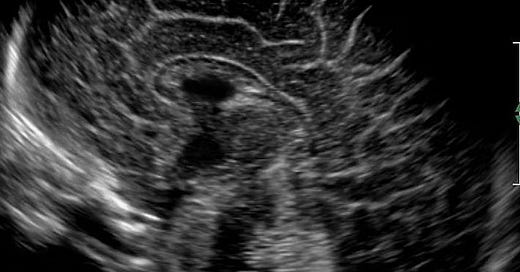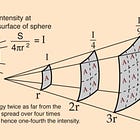Transcranial Focused Ultrasound (tFUS) Will Blow Your Mind
It's a remarkable technology in the making
The Frontier Psychiatrists is a regular-enough health-themed newsletter. I’ve briefly introduced the world to transcranial focused ultrasound in this previous article.
Ultrasound is a technology that is easy to feel comfortable with. It's the same technology used to measure your baby’s heartbeat, which is some positive association if ever there was one.
Ultrasound is a really, really high-pitched sound wave. Audible sounds, traveling through mediums like air, make it vibrate, and make our eardrums vibrate, and that in turn, when trans-coded into neural signals by the cochlea, makes sounds things we can hear. Those sounds range between 20hz and 20,000 Hz (also written 20 kHz). Ultrasound begins where human hearing ends, at approximately 20 kHz and above.
We have used ultrasound to travel through human bodies, bounce back, and use those reflections to capture an image, just like we use radar and sonar. The wave hits an object and bounces back; we recreate an image from the reflections.
You can “see” inside the body, without harming it, which is awesome. He’s a neonatal brain, imaged with ultrasound:
Jay Sanguinetti, Ph.D. has been working with this modality for years. Just recently, he formerly brought his company, Sanmai, out of “stealth.”
“Stealth” is a concept that I take some issue with, in that it’s a way for companies that no one has ever heard of to stay that way. You know, to sneak into the market and change everything! As a fan of organic growth strategies and earned media, the most stealthy thing about all brain stimulation companies is the same: people think pills exist, and maybe therapy, but want neither, and what are you talking about? Ultrawhat? For your brain?
Exactly. However, I’m a big fan of obscure sounds—see my prior writing on Beck, American Football, and Modest Mouse! tFUS is the indie rock band of the treatment of brain disorders without pills or therapy space.
Jay—along with many others on his team, like the inimitable
—are now able to tell you, publicly, what they are up to.It’s not trivial. It could heal deep regions of the brain that have required surgery in the past, non-invasively. It could do a lot of things. However, it exists.
As science. Now! And you can know that tFUS changes the Brain with non-invasive sound waves, and that is very cool. It can go deep into the brain without surgery. You can and should be excited.
It might heal depression, as we see in this graphic from a recent RCT:
It might heal anxiety:
Wilcoxon Signed-Rank Test comparison of pre- and post-tfUS resulted in a significant decrease in anxiety as measured by the HAM-A (W = −3.69, p < 0.001, pre-post-Δ = −12.64 + 12.51, effect size = 0.931, power = 99% at alpha = 0.05) and the BAI (W = −3.94, p < 0.001, pre-post-Δ = −12.88 + 10.42, effect size = −0.931, power = 99% at alpha = 0.05).
Sixteen participants (64%) reported a PGI-I score of >2, indicating significant perceived benefit. Fifteen participants (60%) demonstrated a meaningful reduction (>30%) of HAM-A score at completion. Eight participants (32%) achieved remission of GAD symptoms according to a completion HAM-A score <14.1
It might heal PTSD2:
And dozens of other brain disorders besides.
Follow this space for more!
Mahdavi, K. D., Jordan, S. E., Jordan, K. G., Rindner, E. S., Haroon, J. M., Habelhah, B., ... & Kuhn, T. P. (2023). A pilot study of low-intensity focused ultrasound for treatment-resistant generalized anxiety disorder. Journal of Psychiatric Research, 168, 125-132.
Barksdale, B. R., Enten, L., DeMarco, A., Kline, R., Doss, M. K., Nemeroff, C. B., & Fonzo, G. A. (2025). Low-intensity transcranial focused ultrasound amygdala neuromodulation: a double-blind sham-controlled target engagement study and unblinded single-arm clinical trial. Molecular psychiatry, 1-15.







